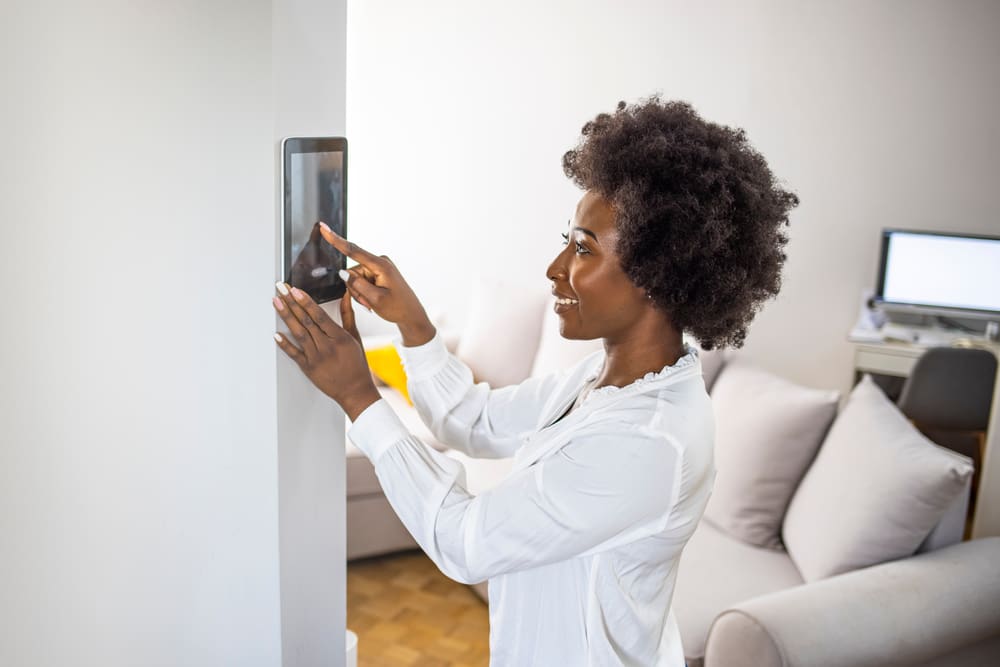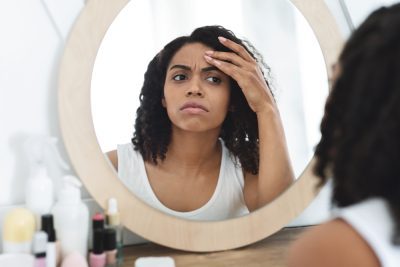The modern home is no longer just a place to live, it’s transforming into a personalized haven that prioritizes comfort, convenience, and even proactive health management. Fueled by ever-evolving technology, smart homes are seamlessly integrating into our lives, offering an unprecedented level of automation and control. If you’re looking to elevate your living experience, here are some of the most innovative home technology trends that are redefining the modern home.
Voice-Activated Control: Your Home Responds to Your Commands
Virtual assistants like Amazon Alexa and Google Assistant have become ubiquitous, allowing you to control various aspects of your home with just your voice. Imagine effortlessly adjusting the thermostat, dimming the lights, or playing your favorite music – all without lifting a finger. This hands-free convenience is a major selling point for busy homeowners and is constantly evolving with even more advanced features and capabilities.
Looking ahead, expect voice-activated control to become even more intuitive and personalized. Smart assistants will learn your preferences and routines, allowing for proactive suggestions and automated actions. For instance, your assistant might automatically turn on the lights when you enter the room or start brewing coffee when you say “good morning.”
AI-Powered Personalization: A Home that Learns Your Needs
Artificial intelligence (AI) is the next frontier in smart home technology. AI-powered systems are learning user preferences and routines, taking home automation to a whole new level. Imagine a home that preheats the oven when you start prepping dinner, adjusts the lighting to match your mood, or even anticipates your needs before you do. This level of personalization creates a truly customized living environment that caters to your unique lifestyle.
As AI technology continues to develop, expect even more sophisticated features. Smart homes may be able to learn your sleep patterns and adjust the temperature for optimal rest, or analyze your energy usage and suggest ways to optimize efficiency. The possibilities are truly endless, with AI paving the way for a future where your home anticipates and fulfills your needs seamlessly.
Wellness-Centric Design: Technology for a Healthier You
The pandemic has heightened our awareness of health and well-being, and this is reflected in the latest smart home trends. Expect to see a rise in technologies that promote a healthy home environment. Here are some specific examples:
- Advanced Air Purification Systems: Smart air purifiers with advanced filtration systems can remove dust, allergens, and even airborne viruses from your home, creating a cleaner and healthier breathing environment.
- Personalized Fitness Solutions: Smart mirrors that provide personalized fitness routines based on your goals and fitness level can transform your home gym experience.
- Seamless Sleep Tracking: Sleep-tracking devices that integrate with your smart home ecosystem can monitor your sleep patterns and provide insights into your sleep quality. This information can then be used to adjust environmental factors like temperature and lighting to promote better sleep.
By incorporating these wellness-focused technologies, your home can become a sanctuary for relaxation and rejuvenation.
Sustainable Smart Homes: Energy Efficiency and Environmental Responsibility
As eco-consciousness becomes a priority for many homeowners, smart home technology is stepping up to meet the challenge. Here’s how:
- Smart Thermostats and Lighting: These devices can be programmed to optimize energy use based on your occupancy and preferences. For instance, the thermostat can automatically adjust the temperature when you’re away or at night, while smart lighting systems can detect when a room is unoccupied and automatically turn off the lights.
- Smart Water Management Systems: These systems can help detect and prevent leaks, saving you money on water bills and preventing costly water damage. Some systems can even monitor your water usage and provide recommendations for conservation.
By integrating these sustainable features, you can create a smart home that’s not only convenient but also environmentally responsible.
Immersive Entertainment Experiences: Bringing the Outside In
Home entertainment is being revolutionized by the integration of immersive technologies like virtual reality (VR) and augmented reality (AR). Imagine watching a movie where you feel like you’re part of the action, or attending a concert from the comfort of your living room. VR and AR have the potential to transform the way we experience entertainment at home.
While VR offers a completely immersive experience by transporting you to a virtual world, AR overlays digital elements onto the real world. For example, imagine using AR to project a virtual game board onto your coffee table or overlaying historical information onto a real-life landmark when you point your phone at it. Both VR and AR have the potential to create interactive and engaging entertainment experiences that cater to a wide range of interests.
Beyond the Trends: The Future of Smart Homes
The future of smart homes is brimming with exciting possibilities. As technology continues to evolve, we can expect even more seamless integration between devices and increased personalization based on individual needs and preferences.
Here are some potential areas of growth for smart home technology:
-
Enhanced Security and Safety: Smart home systems can already deter potential break-ins with smart locks, video doorbells, and motion sensors. In the future, expect even more sophisticated security features, such as facial recognition technology and AI-powered anomaly detection that can identify unusual activity patterns.
-
Improved Interconnectivity: One of the challenges of smart homes today is compatibility between devices from different manufacturers. The future is likely to see a more standardized approach, allowing for seamless communication and interaction between various smart home devices regardless of brand. This will create a truly unified smart home ecosystem that functions cohesively.
-
Focus on Mental Wellbeing: While there’s a growing focus on physical health in smart homes, expect to see a rise in technologies that promote mental well-being. For instance, smart lighting systems may be able to adjust lighting color temperature to create a calming atmosphere, or smart speakers could offer guided meditations and mindfulness exercises.
-
Elderly Care and Assisted Living: Smart home technology has the potential to revolutionize elder care by providing features that promote independence and safety for seniors. For example, wearable health monitors can track vital signs and alert caregivers of potential issues, while smart medication dispensers can ensure seniors take their medications correctly.
-
Integration with Personal Wellness Apps: Imagine your smart home seamlessly integrating with your favorite fitness tracker or health app. This could allow your home to adjust settings based on your real-time health data. For example, the thermostat might automatically adjust the temperature if your fitness tracker shows you’ve just completed a strenuous workout.
Building a Smart Home for You
The world of smart home technology is vast and constantly evolving. With so many options available, it’s important to consider your specific needs and preferences when choosing which technologies to integrate into your home. Here are some tips to get you started:
- Identify your priorities: Do you prioritize convenience, security, energy efficiency, or something else entirely? Identifying your primary goals will help you narrow down the most relevant technologies for your smart home.
- Start small and scale gradually: Don’t try to overhaul your entire home at once. Start with a few key devices and add more as you become comfortable with the technology and identify your needs.
- Consider compatibility: As mentioned earlier, compatibility is a crucial factor. Choose devices that work well with each other and are likely to be compatible with future technologies.
- Focus on user experience: The best smart home technology is intuitive and easy to use. Look for devices with user-friendly interfaces and voice control options for maximum convenience.
By embracing innovative smart home technology trends, you can create a living space that is not only stylish and comfortable but also personalized, efficient, and promotes your overall well-being. The future of smart homes is bright, and the possibilities are truly limitless.
This story was created using AI technology.

















